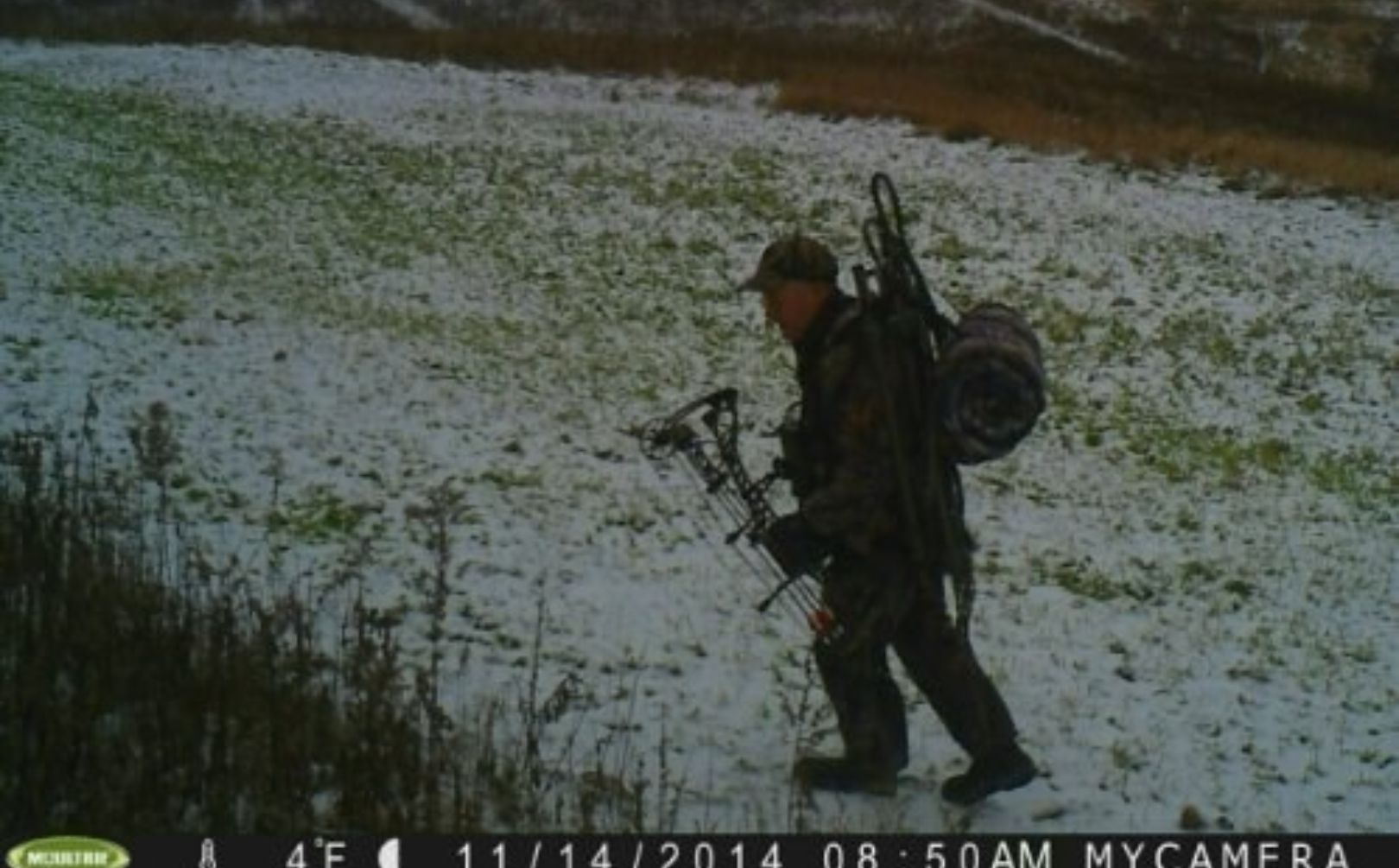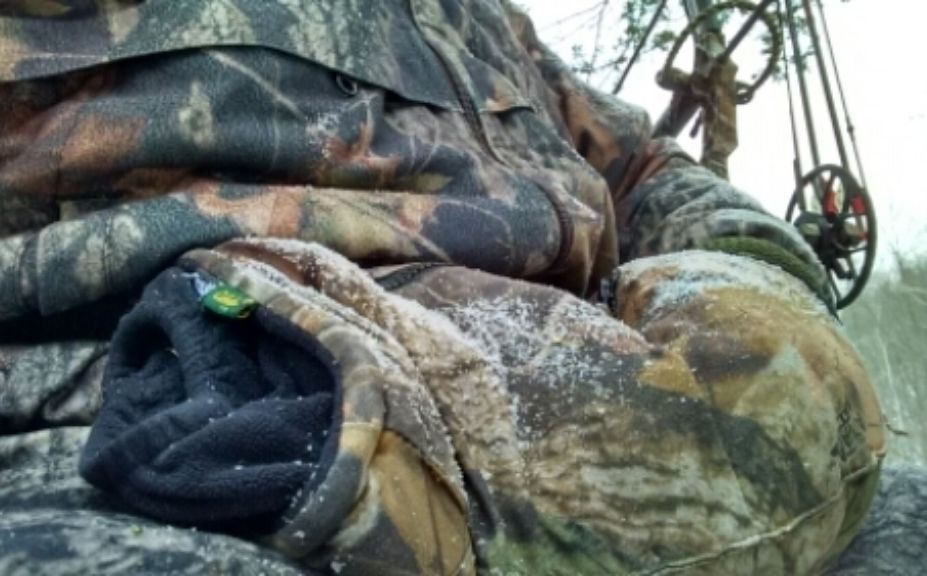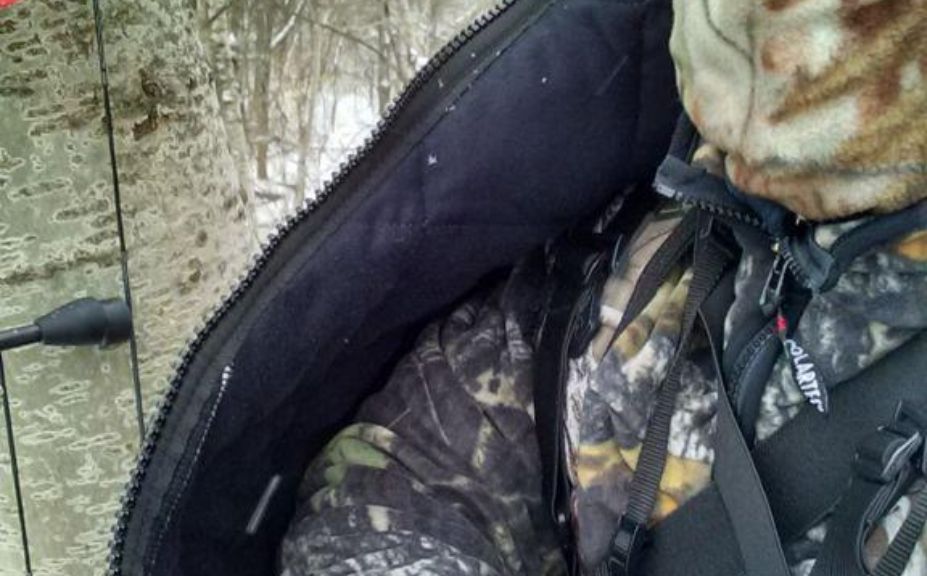
In the fall of 2003 my lease partner Tim and I set out on our annual WI pre-rut hunt. A cold front was in the forecast for the first four days of November and although we had a couple of tubs of clothes each we just didnt anticipate how COLD the cold front was actually going to be. For two Upper Peninsula of MI hunters we had learned to dress for the cold, even braving sub-zero temperatures for many hours on a treestand. However, cold weather sits have to be properly planned for, and we had not.
Those first four days of November were incredible and by the time they were over Tim and I had seen a combined 26 different bucks. We witnessed fighting, snorting, wheezing, grunting, seeking and chasing. It was a pre-rut to remember and it had everything to do with that first major cold front of the season. Our morning starting temperatures were between 10 and 12 degrees, and when on the 4th day the temperature peaked into the 30s, it actually feltwarm. Tim and I sat all day, each day, and when I connected on an ancient giant with an hour to spare on the last day we were both completely worn out.
During our hunt we managed the cold in the stand. We had to manage because we we sat over 11 hours each day and had to survive! We of course had to improvise and by using our experience with many
years in the field and Im going to tell you how we not only survived, but were able to still experience an outstanding hunt. Simply, if you cant staywarmin the stand, you typically cant sit long enough to accomplish your goals as a hunter whether it is during a pre-rut cold front, or a late season doe management shoot. From head to toe we had to plan our sit well in advance of hitting the field because we couldnt afford the risk of leaving our stands to interrupt or possibly even spook all that the rut was going to offer us. My personal process of being warm in the deer stand began during an early hunting experience caused by a similar cold front many years before our WI pre-rut hunt of 2003, and that experience has influenced how I dress every time I enter my treestand to this day.
Purple Fingers
Have you ever gotten purple fingers? Basically a light reddish color mixed with the life-fading pale white of a dying extremity? Ok, maybe not to that extreme, but pretty close. I can remember fingers that took an hour to feel fully useful again, and sometimes the cold sneaks in so slowly that after an 11 hour sit I have found it almost impossible to unclip my gun from my stand rope-I just didnt realize how that much life had been sucked from fingers! It was on one of those first hunting days of my life in the late 80s that had me searching for a solution.
The year was probably 1987 and my brother and I were off on an afternoon bowhunting adventure with very little hunting equipment, and even less actual real hunting clothing. I can still remember the blue, single layer cotton work coveralls my dad gave to me that I drew camouflage into with a permanent marker. It was in those early years where I learned to layer, although not properly. But that layering concept did not help my hands and when it came time to stand on a branch at a stand-site during a hunting season cold front I found it to be a tough act to hold on to the bow, hold on to the tree and still keep my handswarm. Although thankfully there was no lasting damage, I still to this day remember I waited so long on stand attempting to endure the cold that it was very difficult to use my fingers to climb out of the tree-they simply didnt want to work!
That experience sent me searching through magazines looking for an answer, and I found it! I saw some fancy muff that you wear around your waste and could push each hand into from the side. As a 17 year old hunter with little cash for similar arrow sizes and matching broadheads let alone new hunting clothes, a new muff was out of the question. Luckily my mother has always been a pretty resourceful woman and helped me to put together my very own muff made with layers of wool on sale at the local fabric store. By adding a large safety pin to hold my muff onto my hunting clothes I was ready to hit the woods!
Now, many seasons later Ive owned numerous additions of those fancy muffs and some even give you the options of a scent elimination layer and wind-proofing. There is a currently even a model with a plastic sleeve that you can use your smart phone through! Add a couple large heat packs and literally Ive been able to withstand temperatures 20 below zero with a stiff wind! In addition to the heat packs, Ive also added my own layer of a waterproof leg gator wrapped around the outside. The gator completely covers the muff and there is no wind or rain that will get inside to rob your hands of any heat. Ive had the same pair of waterproof gators since the mid 90s and they have been extremely effective at not only keepingmy handswarmand drybut my hunting partners as well as no one else seems to carry any in their hunting gear!
Even inwarmweather I wear my muff because it always carries my grunt call, harness rope and other small necessities. However, my typical cold-weather use is to wear verywarmmittens into the stand, and then to take those mittens and place them against either side of my chest under my coat. I then take thin, single layer knit gloves to wear on stand, typically always covered within the muff unless I need to take a shot. Those heavy gloves help to add an additional layer of insulation to my core area of chest and mid-section to keep me warm in the deer stand, but at the same time Ive always appreciated sliding on a"heated" pair of mittens after climbing out of my treestand to head back to the truck.

Trapping Heat
Without a protected core and head area your heat just drifts away and it is nearly impossible to stay warm in the deer stand. The core area is fairly simple to keep warmand it involves proper layering. When Tim and I experienced that 2002 hunt we not only had the use of the hand muffs, but we had the use of many layers of quality clothing as well. We didnt have our heaviest clothing, but the insulating single layers of quality thermal underwear, fleece, and quiet rain gear combined to provide adequate core protection. I think the most difficult part about adding all of those layers prior to our hunt was that while attempting to stay scent-free, we were forced to get dressed outside of the truck in open ag-land, exposed to the snow flurries and morning northwest breezes in 10-12 degree temperatures! We had some very cold walks across the fields to the woods and I can remember going from very cold, to comfortable, towarm, to hot, and then to cold again as we opened up our layers and removed head gear to keep from getting too damp with sweat.
But a protected core is only a portion of the battle, and personally I cant stand not having awarmhead, neck, and face. My layering starts with a thin fleece type facemask and I know when Tim and I were on our hunt I used 2 masks. This helps to keep your neckwarmtoo and when combined with a waterproof cap of some type you are set for just about whatever Mother Nature throws your way. However, when the temperatures really dipwhich for me means into the teens or 20s with wind, I opt for a knit facemask AND the thin outer mask as well. In those temps I add a knit water and wind proof cap and literally you cant get much warmer.
Something that cant be overlooked when adding all those layers to your head and chest area is how it will affect your archery accuracy. For me, with the knit facemask and the way I anchor against my jaw while shooting with my right hand, the arrow hits approximately 4 to the left. The thin mask makes a slight difference as well. Also, its not uncommon for the bulky clothes to throw the arrow a bit off as well so always practice with your cold weather gear!
Frozen Toes
As you can probably guess, Tim and I didnt bring our coldest weather boots and although we could manage through some effective layers forkeepingour hands, core, and head we just couldnt do that with our feet. We certainly had to improvise if we were to stay warm in the deer stand! What we found to be pretty effective was to bring along some thinly insulated pants, while wrapping them around our waste on the way in to the deer stand. On the stand we simply pulled them on over the boots and up to the knees, threw in some heat packs, and folded the loose pant legs under our non-insulated rubber boots. This, along with changing into dry socks at the stand site really helped to keep our toeswarm.
My choice would have been my 1500 gram knee boots, together with both medium and heavy weight dry socks, but of course we just hadnt planned for it. Regardless of your choice of boot though, enough cant be said for changing into dry socks when you reach your stand. If there is enough room, it also doesnt hurt to include both a medium weight, and heavy weight sock at the same time that have a good level of both insulation and moisture wicking capabilities. Tim and I didnt have the luxury of our tried and true cold weather boots including my heavier knee boots or military surplus "Mickey Mouse" boots, but that didnt mean we had to exit our stands early with frozen toes.
Heater Body Suit

Have you seen a Heater Body Suit? To me there is nothing that I have found that will keep me warm in the most extreme of conditions. I first tried a Heater Body Suit during an OH public land muzzleloader hunt. With highs in the single digits and lows below zero, the hunt became as much an effort in survival as important as the actual hunt itself. By adding the Heater Body Suit I was really able to drastically tilt the level of potential comfort in my favor! I simply combined light clothing including layers of a moisture wicking base and fleece together with a great cap and facemask, and I was all set for several hour "hike and sit" combinations. When I wanted to observe for a while, I just stepped into my suit, zipped in, added my head and face protection...and enjoyed the warmth! During the last week I have also experienced two, "dark to dark" sits within temps in the teens to twenties while wearing my Heater Body suit to keep warm in the deer stand. The results this past week have been outsanding! With a simple zip from the inside I have been instantly ready to take a shot, while keeping warm until that time.
Conclusion
Really the name of the game is seeing how long you can survive comfortably on stand to achieve your hunting and management goals. At the end of our 4 day hunt in early November of 2002 I was lucky enough to shoot an incredible buck. I remember walking up to him and shaking not necessarily just from excitement, but from also being exposed to the cold temperatures all-day, for 4 days straight without having the luxury of my best cold weather gear (in particular a Heater Body Suit!). I remember our hunt being a bit of survival, enjoyment, and fatigue, but in the end came success. By learning to manage the weather by staying warm in the deer stand, the level of both enjoyment and success in your hunting efforts will be enhanced and rewarded!